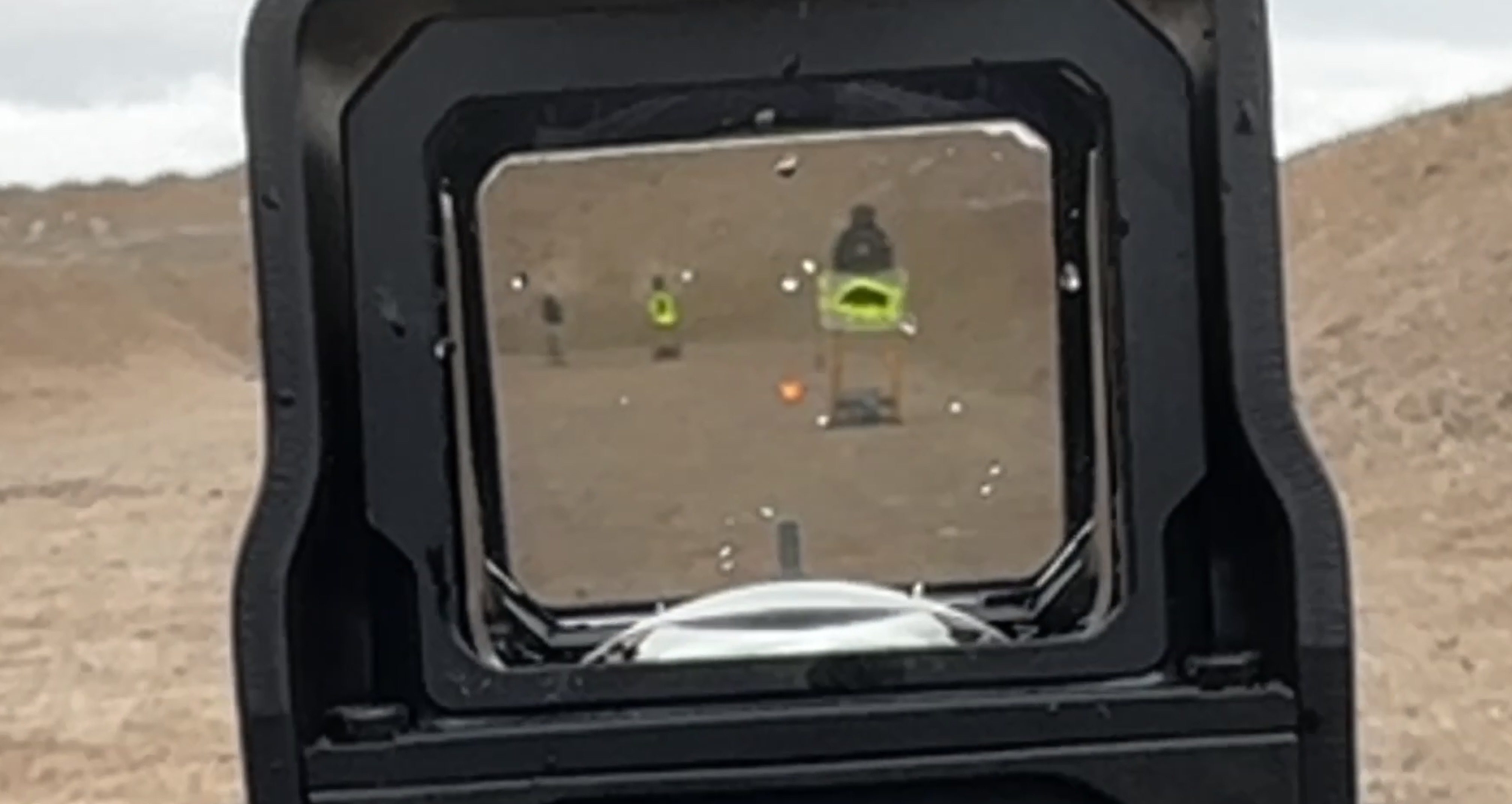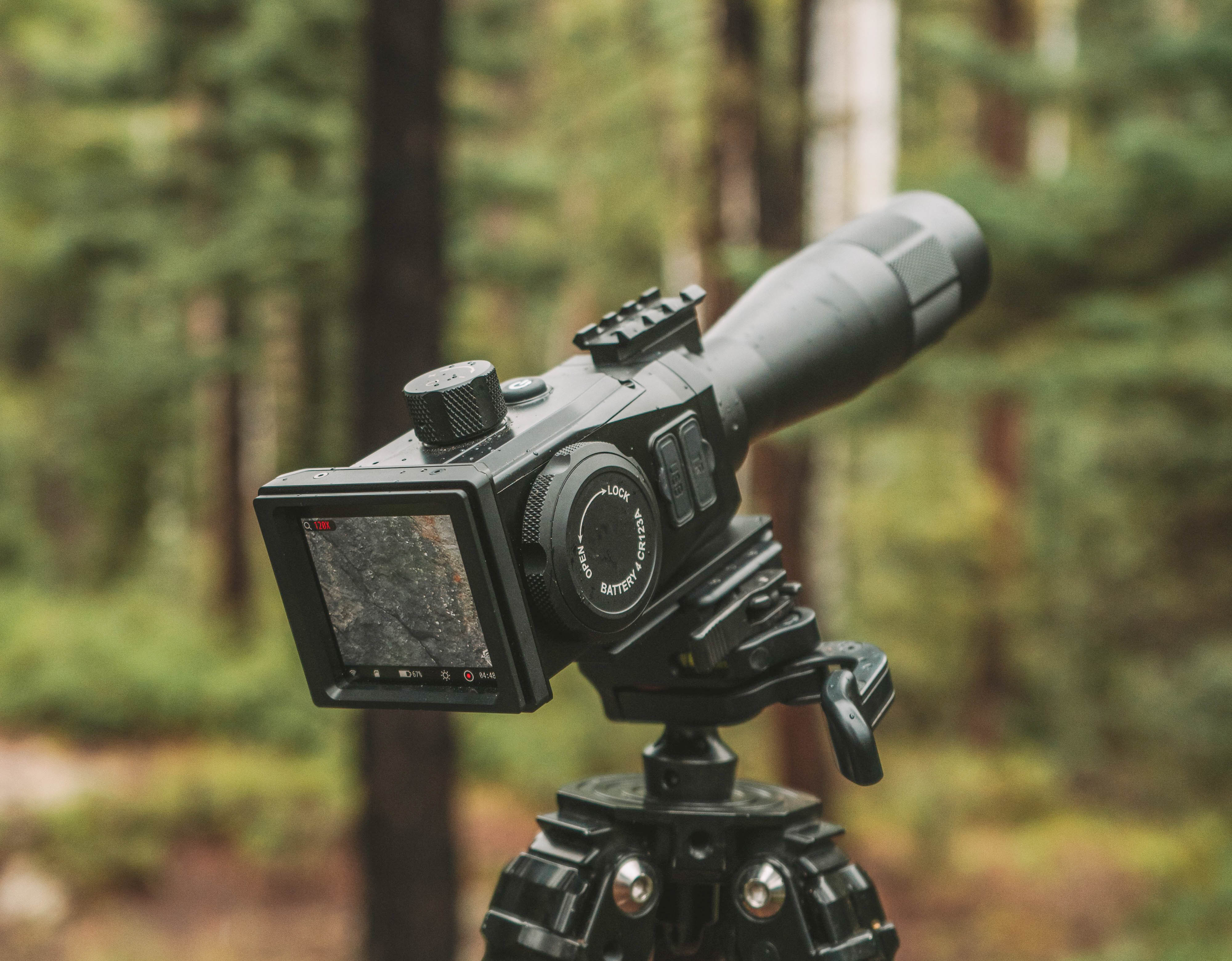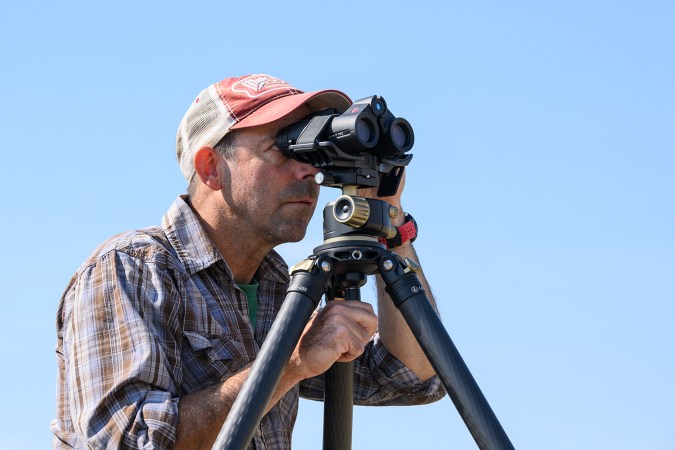We may earn revenue from the products available on this page and participate in affiliate programs. Learn More ›
When we were all worried about Y2K, I don’t think anyone thought their landline was a living fossil. But, in 2007, the first iPhone came to market with GPS, web browsing, email, and a 2-megapixel camera. And just like that, a phone was more than a phone.
I think the same evolution is about to happen to optics because technology, like other things, rolls downhill. The advancements in AI, thermal, sensors, and electronics created for other markets will eventually roll down to hunting. That tech will turn your binoculars into multi-functional pieces of gear with enhanced capability extending beyond spotting game. Here’s what’s out there right now, and what I think you can expect in the future.
Smart Optics in 2024
For years, we’ve had scopes and binoculars with onboard ballistics and rangefinders. But those products represent the early stages of digital optics. This year’s new product introductions utilize much more powerful technology.

Swarovski’s AX Visio is a smart optic released at CES that can take photos, record videos, use AI to identify animals, and use the internal sensors to remember the location of an object you’ve spotted and guide you back to it. They’re letting developers create more apps, so they’ll be able to do more by hunting season. Yes, they’re big, bulky, and not ideal mountain hunters, but they’re also fascinating. The new binos costs $4,800.
At SHOT Show, I saw a $400 digital binocular from Buk Ops that will be available in August. It uses digital night vision technology to make it the ultimate low-light glasser. It doesn’t matter how good an optic’s light transmission is or how big the objective is, it can’t compete with night vision. If you’re unfamiliar with digital night vision, it’s not the green or black-and-white image you’re used to seeing, it displays in full color. But the best part is that the optic doesn’t only work at dusk and dark, it works just as well during the daytime.
The Buk Ops binoculars opened my eyes to the possibility of using digital night vision for low-light use. One of the cornerstones of our annual optics test is low light performance, and it’s impressive how long past sunset quality optics work. But, they’re nothing compared to the capabilities of night vision. If we’re headed down the road of digital optics, it only makes sense that they’ll also use night vision technology to boost their low light performance.
Unisteller launched the Odyssey Pro, a smart telescope for backyard astronomers this year. If you want to look at the moon and then Jupiter, it automatically adjusts for a crisp focus. But let’s say you don’t know where to point it to find Jupiter, just tell the app where you want to go and it will automatically aim in that direction. Now let’s say you’re at the max zoom looking at a distant, dim planet. The software will stack multiple images on top of eachother to take a low resolution image and turn it into a high resolution image. The models cost between $2,500 and $4,500.

Other innovations to keep an eye on are all the augmented reality glasses coming to market. They could end up removing the need to look at your phone or even through an optic. With AR linked to a digital spotter you could see everything the spotting scope does plus a heads up display with unlimited apps.
The Spotting Scope of the Future
If you want a clean, crisp image at 45x magnification you’re going to need an optical zoom. But, that’s only true today. In the future, digital zoom is going to be on par or even better than your favorite spotter.

The Nikon P1000 camera has a 125x digital zoom, shoots in 4K, and only costs $1,000 (see sample footage above). It’s not even the newest technology, and the digital zoom is really good. So, it’s not unreasonable to think we’ll be using 50 to 70x digital spotting scopes with excellent resolution. They’ll incorporate large LCD screens and have image stabilization built in. Digital spotters won’t have heavy prisms or the need for costly glass, so they’ll likely be lighter and cheaper than top-of-the-line analog optics. Another point toward this trend is the thermal scope market, which uses low base magnification scopes and digital zoom to produce quality images.
Going one step further we could see tech borrowed from the smart telescope market. Just like smart telescopes can be controlled from a phone, a smart spotting scope could be too. Imagine tapping on a location on the map and the spotting scope aims itself at that point and then starts a grid search. It could also use software to improve a low resolution image during low light like the Unistellar’s Odyssey.
The Accufire Omnis is a digital spotting scope you can buy right now that has a lot of the tech I’ve described. It has 30x to 120x digital zoom and a 2.95-inch LCD screen. It costs around $1,300 and weighs 34.7 ounces — about half the weight of an analog spotter. To me, it represents where we’re at now with digital optics and it’s not a far leap to start adding technology onto it like apps, AI, GPS, and thermal sensors.
Predicted Specs
- 10x base magnification
- 75x digital zoom
- 8×6-inch LCD screen
- Image stabilization
- Bluetooth and WiFi
- Integrated apps
- Photo and video recording
Optics with Apps
One advantage digital optics have over analog is that they can connect with other tech and integrate new apps. Let’s imagine what the future generations of the Swarovski AX Visio could offer in a few years. By adding in a laser rangefinder and a LiDAR Scanner (VR goggles currently have them)those binoculars could potentially:
- Field score game animals
- Remember locations you’ve spotted game in the past
- Mark locations and send them to your mapping software
- Map the area using the LiDAR scanner and update your mapping software with a 3D map. You could then use AI to provide all potential scouting routes and probabilities of success.
- Use AI to reduce the appearance of mirage or enhance image quality
- Help you spot animals with an AI powered app
Thermal and AI Will Help You Spot Game
At SHOT Show’s range day I got to try out a really cool thermal reflex sight that’s currently just for the military. It’s not that the tech is too top secret for us to use. It’s that it’s way too expensive to be marketed to people who don’t get an allowance from the Senate finance committee.

The thermal sight had clear optics, just like looking through one of the best holographic sights, but it showed the outline of an object’s heat signature. Put that technology into a spotter or binos, and you have something that can help you see animals you might otherwise miss. Essentially, that buck bedded in the shadows would be as visible as a skylined bull.
AI could find animals similar to how we do. Think about how you find animals by noticing things that are slightly out of place: a horizontal line among vertical trees, a white rump, or the flick of an ear. The AX Visio binoculars can already identify 9,000 bird species in addition to animals and insects. If its recognition software can tell the difference between a chickadee and nuthatch, then it’s not a leap for it to be able to pick out anomalies in the landscape. In the future it could tell the difference between a branch and an antler and identify movement, then give you a notification when it sees something.
Regulators and Wildlife Agencies Will Struggle to Keep Up with Tech
We know that digital optics will continue to advance quickly, but we don’t know how wildlife agencies will respond with regulations. For example, Montana and several other states currently prohibit the use of Garmin’s smart sight for bowhunting. Will they one day allow, or prohibit, the use of AI-powered binoculars for hunting? Only time will tell where regulations and our own hunting ethics will draw the line.









